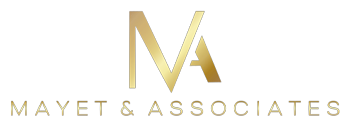Criminal networks and corrupt actors have long attempted to disguise the origins of unlawful funds by funnelling them into the legitimate financial sector. As traditional laundering techniques became easier for regulators to uncover, these actors shifted toward more intricate schemes. One of the most common strategies has been the exploitation of corporate structures, companies, trusts, partnerships, and other legal arrangements, to conceal the individuals who ultimately control and profit from them. This challenge is global, transcending borders and legal systems.
Beyond simply using shell entities to obscure identity, large corporations have also been instrumental in enabling the movement of illicit capital across jurisdictions. The international community has increasingly recognised this problem and has developed frameworks to address it. A central component of these efforts is the requirement that countries identify and disclose the beneficial owners of corporate and trust structures. Beneficial ownership refers to the natural person who ultimately enjoys control, ownership, or economic benefit from an entity or arrangement (see Maíra Martini, Combating Illicit Financial Flows, U4 Anti-Corruption Resource Centre).
Global developments on beneficial ownership disclosure
The G20 and the Financial Action Task Force (FATF) have positioned themselves at the forefront of global initiatives aimed at preventing the abuse of corporate vehicles. The FATF, as the international body responsible for setting standards on anti-money-laundering (AML) and counter-terrorist financing (CTF), has issued Recommendations 24 and 25, which deal with legal persons and legal arrangements. Both the FATF and the G20 agree that these recommendations form the foundation for combating opacity in corporate ownership.
To reinforce this, the G20 adopted the High-Level Principles on Beneficial Ownership Transparency, committing member states, including South Africa, to implement these standards. South Africa has been the only African country directly involved in prior G20 discussions on beneficial ownership.
In response to growing international pressure, the South African Cabinet established an interdepartmental committee to evaluate deficiencies in the domestic framework. Transparency International had highlighted the absence of a statutory definition of “beneficial owner” in South African law, which resulted in South Africa consistently scoring 0% on this criterion during global assessments. The long-awaited Financial Intelligence Centre Amendment Bill (FICA Bill) was viewed as the legislative vehicle that would finally address this gap and align South Africa with international norms.
The Financial Intelligence Centre Amendment Act 1 of 2017
The President signed the FICA Amendment Act into law on 26 April 2017. Although certain sections still require supplementary regulations and industry guidance before taking effect, the enactment itself represents a major achievement.
The Act brings several important benefits:
- Strengthened financial system integrity: South Africa’s AML/CTF framework will be seen as more robust and aligned with global standards.
- Avoidance of negative FATF action: Failure to implement beneficial ownership rules can result in an adverse FATF statement, which could seriously harm a country’s financial reputation, especially in an economically fragile environment.
- Adoption of a risk-based approach: Institutions may tailor customer due diligence processes, reducing unnecessary administrative burdens and supporting greater financial inclusion.
- Introduction of a clear definition of “beneficial owner”: The Act finally defines the term and introduces a systematic method for identifying such individuals through a mechanism commonly referred to as the “cascading regime” under s 21B.
Section 21B, which focuses on legal persons, trusts, and partnerships, mirrors the FATF recommendations but also improves on them by providing a structured and detailed system for determining beneficial ownership. This is operationalised through an entity’s Risk Management and Compliance Programme (RMCP).
Under s 21B, accountable institutions must determine:
- the nature and purpose of the client’s business,
- the client’s ownership and control structure,
- the identity of all persons who qualify as beneficial owners, and
- verification measures to confirm such identities.
If ownership cannot be established through direct shareholding, institutions must identify:
- individuals who exercise control through other means, or
- individuals who exert control over management decisions.
Practical and regulatory challenges
Despite being a legislative milestone, implementation will not be without difficulties. The FATF itself continues to grapple with the broadness of the beneficial ownership definition, particularly terms such as ownership, effective control, and control through other means. Unlike other international instruments, such as FATCA (10% threshold) or the FATF’s typical 25% threshold, the South African definition currently provides no numerical benchmark. Clarity may need to come from future regulations or guidance notes issued by the Financial Intelligence Centre.
Another significant obstacle is the lack of a centralised, accurate, and up-to-date beneficial ownership registry. While the Companies and Intellectual Property Commission (CIPC) holds certain information, it does not yet meet FATF standards for accessibility, reliability, or completeness. Amendments to the Companies Act and its regulations are underway to address this gap.
Additionally, South Africa has not yet completed a national risk assessment specific to beneficial ownership, as required by G20 Principle 2. This assessment is critical to identifying vulnerabilities and tailoring mitigation strategies.
Conclusion
The enactment of the FICA Amendment Act marks a pivotal step in South Africa’s efforts to strengthen transparency and curb the misuse of corporate structures for illicit purposes. Although substantial work remains, particularly regarding implementation mechanisms, thresholds for ownership, and the establishment of a reliable central registry, the foundational framework is now in place.
South Africa’s progress must be understood within a global context where even developed jurisdictions struggle with compliance. According to Martini, only 9% of OECD countries currently meet international standards on beneficial ownership transparency, and the United States has yet to finalise key legislative proposals in this area.
Nonetheless, South Africa’s move to legally define and operationalise the concept of beneficial ownership is an important achievement and should be welcomed as the beginning of a broader reform process aimed at reducing corporate secrecy and enhancing financial integrity.





